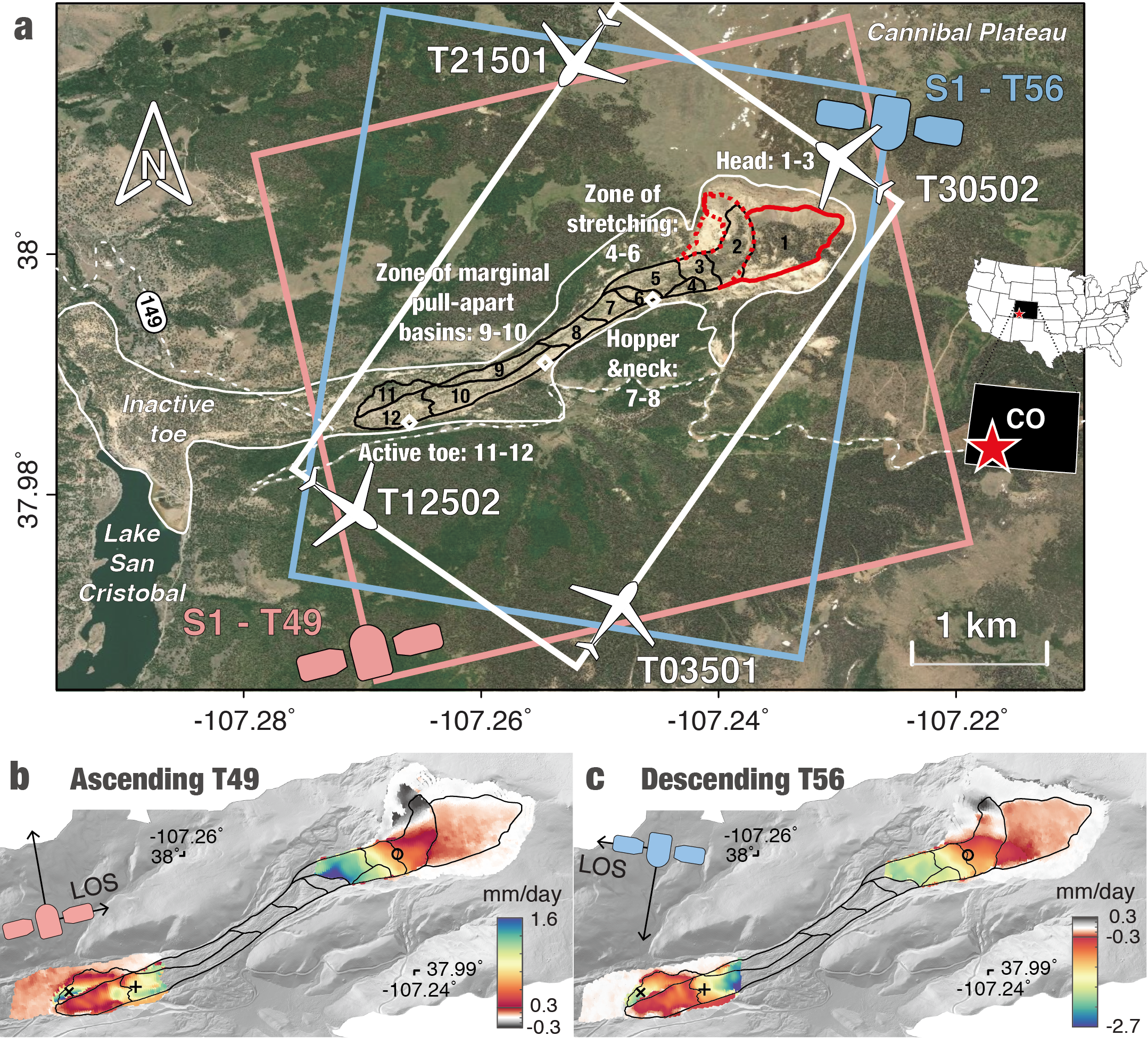
 |
|

Map of the Slumgullion landslide. a, Landslide landscape. Red and blue boxes show swaths from Sentinel-1 ascending (T49) and descending (T56) tracks, respectively. White box shows UAVSAR swaths. Black and gray lines outline the active and inactive landslides. White diamonds show the locations of three extensometers; the borehole inclinometer was located near the center extensometer. Red lines show updated boundaries from this study, and dashed lines are tentative. b&c, Sentinel-1 line-of-sight displacements positive towards the satellite.
| Project Summary |
With its large area of ~1 km2 and perennial motions at ~10-20 mm/day, the Slumgullion landslide in Colorado, USA, represents an ideal natural laboratory to better understand landslide behavior. Here, we use hybrid remote sensing data and methods to recover the four-dimensional surface motions during 2011-2018. We refine the boundaries of an area of ~0.35 km2 below the crest of the prehistoric landslide. We construct a mechanical framework to quantify the rheology, subsurface channel geometry, mass flow rate, and spatiotemporally dependent pore-water pressure feedback through a joint analysis of displacement and hydrometeorological measurements from ground, air and space. Variations in recharge, mainly from snowmelt, drive multi-annual decelerations and accelerations, during which the head of the landslide is the most responsive. The power-law flow theory helps reconcile the mass movement with the subsurface geometry which is explicitly characterized by a novel description of the landslide thickness, the steepness between the lateral and bed shear surfaces, and the tilt of the basal bed.
|
| Tools | Hybrid UAVSAR InSAR and pixel offset tracking, Sentinel-1 InSAR, meteorological records, surface extensometer and subsurface inclinometer deformation measurements |
| Geographic Location | Slumgullion, Colorado |
| Group Members Involved |
Xie Hu <Email> <Personal Web Site> Roland Bürgmann William Schulz Eric Fielding |
| Project Duration | 2018 - 2020 |
| More Information | Nature Communications article < Hu et al., 2020 > |